Run Lola Run
8.2 /10 1 Votes
93% Rotten Tomatoes Release date February 9, 2001 (India) | 7.8/10 IMDb 77% Metacritic Genre Action, Crime, Thriller Duration Country Germany | |||||||||||||||||||||||||||||||||
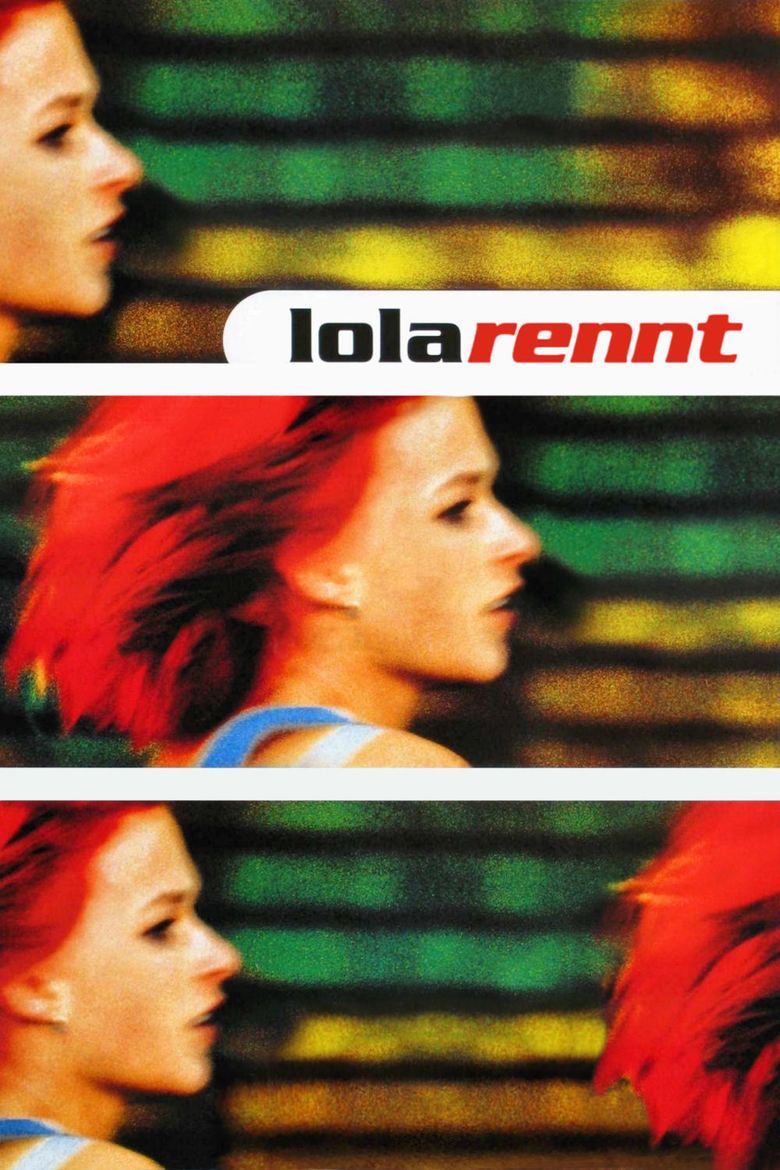 | ||||||||||||||||||||||||||||||||||
Writer Tom Tykwer (screenplay) Release date 20 August 1998 (1998-08-20)(Austria) Cast (Lola), (Manni), (Lola's Father), (Frau Hansen), (Herr Schuster), (Homeless Man) Similar movies Salt , Amores perros , Rat Race , Intact , Swimming Pool , Nacho Libre Tagline Every second of every day you're faced with a decision that can change your life. | ||||||||||||||||||||||||||||||||||
Run lola run 1998 trailer
Run Lola Run (German: Lola rennt, literally "Lola runs") is a 1998 German Science Fiction film written and directed by Tom Tykwer, and starring Franka Potente as Lola and Moritz Bleibtreu as Manni. The story follows a woman who needs to obtain 100,000 Deutsche Mark in twenty minutes to save her boyfriend's life. The film's three scenarios are reminiscent of the 1981 Krzysztof Kieślowski film Blind Chance; following Kieślowski's death, Tykwer directed his planned film Heaven.
Contents
- Run lola run 1998 trailer
- Run lola run
- Introduction
- First run
- Second run
- Third run
- Cast
- Themes
- Soundtrack
- Locations
- Critical reception
- Legacy
- References
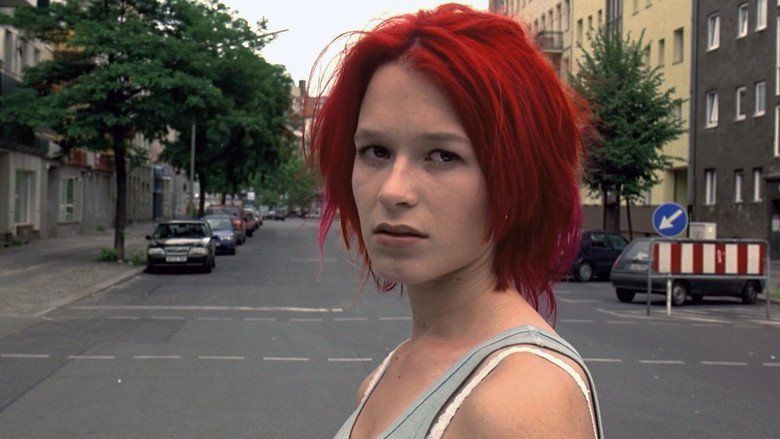
Run Lola Run was released to generally positive reviews from critics.
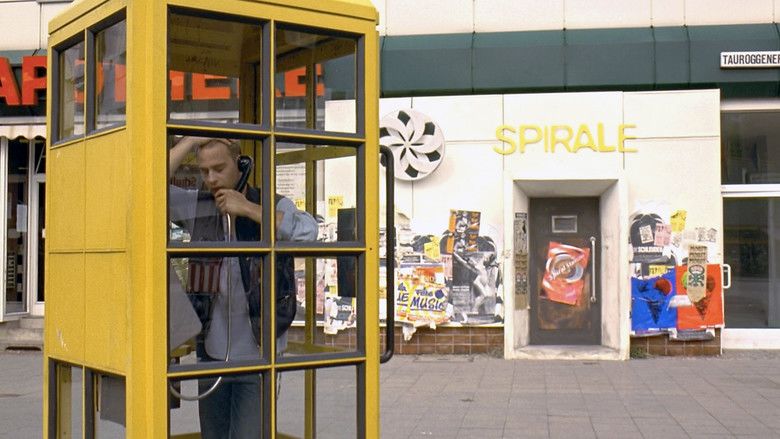
Run lola run
Introduction
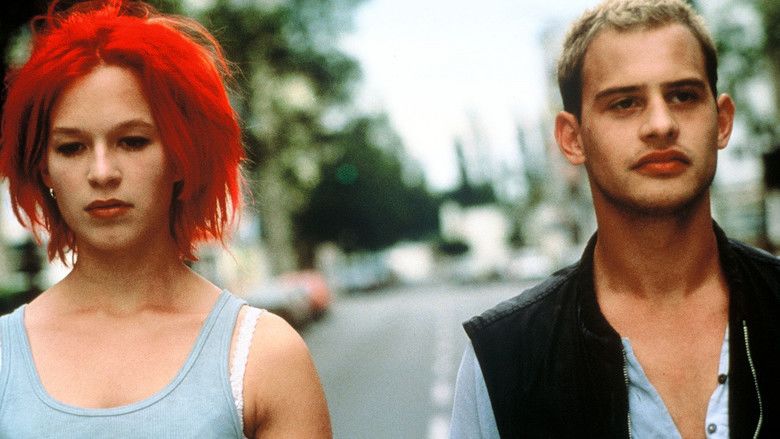
Lola (Franka Potente) receives a frantic phone call from her boyfriend, Manni (Moritz Bleibtreu), a small-time criminal who has just collected 100,000 marks cash in his most recent crime. Lola had agreed to meet Manni at the crime scene and to drive him to deliver the money to his boss, Ronnie. However, when Lola's moped was stolen and she failed to arrive on time, Manni took a subway train. As he did not have a subway ticket, Manni panicked when he saw ticket inspectors and fled the subway, thoughtlessly leaving the bag with the cash behind. From outside, he saw a homeless man examining the money bag as the train departed.
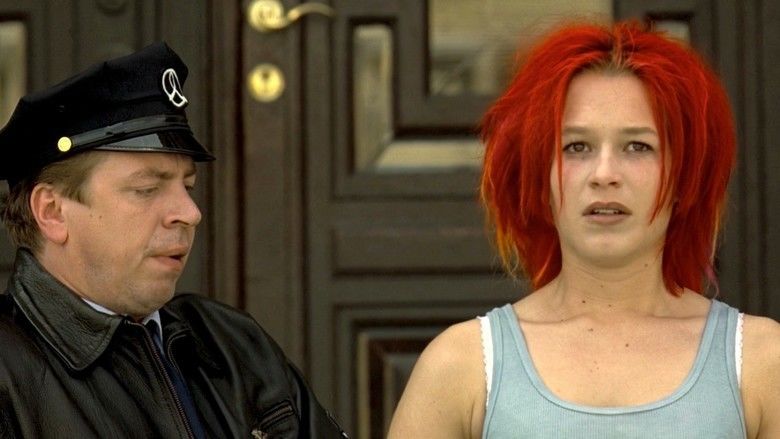
Manni calls Lola from a phone booth and tells her that unless he raises 100,000 marks to give Ronnie within 20 minutes, Ronnie will kill him. Manni also tells Lola of his plan to rob a nearby supermarket. Lola implores Manni to wait and promises to find the money. She decides to ask her dad (Herbert Knaup), who is a bank manager, for help.

After this telephone call, the rest of the film is divided into three runs by Lola, in each of which she tries to obtain the money and save Manni. Each run starts from the same situation, but develops differently and has a different outcome. Each run has brief flashforward sequences that show how the lives of the people that Lola bumps into develop after the encounter.
First run
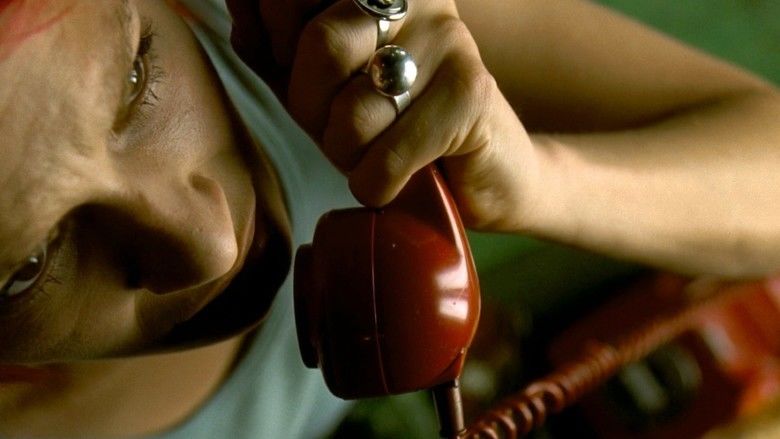
Lola hangs up the phone and starts running (in an animated sequence) down the staircase of her apartment, past a punk with a dog, and (back in live action) through the streets of Berlin towards her father's bank and she collides with a woman pushing a baby carriage, who is shown to later steal a baby after having lost custody of her own. Continuing, Lola runs alongside a cyclist who offers to sell her his bike, which she refuses; a flash-forward shows him being robbed on his bike but later marrying a nurse from the hospital in which he recovered. Lola then causes a car crash, which involves her father's colleague, Mr. Meier, and three men in a white BMW. As Lola arrives at the bank, she passes a banker shown later to be paralyzed in a car accident, then killing herself shortly after. She meets her dad, who dismisses her request for help; he reveals that he's not her biological father and that he plans to elope with his pregnant mistress, and then has Lola escorted out of the bank. A security guard who consoles her is shown to later suffer a heart attack.
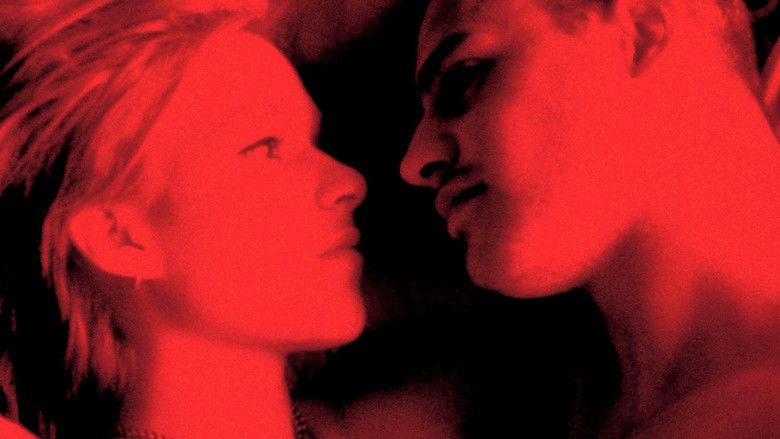
Meanwhile, Manni uses a blind lady's phone card to request money from a friend, only to fail. His friend says he can only give 500 marks which makes Manni angry. Lola keeps on running and ends up parallel to an ambulance that narrowly misses crashing into a glass pane carried by workmen. Lola runs on to meet Manni, who is about to begin the robbery. She shouts his name but he is unable to hear her and enters the store. Lola decides to help him. Once they obtain the money, they flee on foot but find themselves surrounded by police. Manni throws the bag with money up in the air, causing a nervous police officer to accidentally shoot Lola in the chest.

After that, Lola and Manni are shown lying in bed together. Lola recalls a conversation with Manni about their love, and whether she wanted to leave him. The movie returns to the dying Lola. Her decision was to not leave Manni, and she doesn't want to die. The film then returns to their phone call.
Second run
Lola again starts running, only to be tripped by the man with the dog. Falling down the stairs, Lola injures her leg, which makes her limp. Running to the bank, she collides with the woman pushing a baby carriage, who would later win the lottery and live a luxurious life. Passing the cyclist, she accuses him of stealing the bike he is selling; a flash forward shows he became homeless. Manni, again borrowing the blind lady's phone card, unsuccessfully tries to borrow money.
After causing another car accident between Mr. Meier and the white BMW, Lola arrives at the bank moments later; her delay due to her earlier injury allows her dad's mistress to explain he isn't the child's father. Lola hears them arguing. Infuriated, Lola leaves the bank but then comes back, takes the security guard's gun and robs the bank. A flash forward shows a banker she passes falling in love with a colleague. Lola escapes because the police mistake her for a fleeing hostage. Passing the ambulance, Lola asks for a ride, distracting the driver and causing the vehicle to hit the glass pane. Still late for the rendezvous with Manni by moments, Lola calls his name, only this time he hears her call. Manni walks towards Lola, only to be hit by the hastened ambulance, which fatally wounds him.
Manni recalls asking Lola how she would cope with his death. He believes she will have another boyfriend after his death but Lola says that he (Manni) is still alive. The film briefly returns to the present day and shows Manni refusing to die before restarting once again at the beginning of Lola's run.
Third run
Lola starts running again and leaps over the punk and his dog. Running to the bank, she avoids the woman with the baby carriage, who in a flash forward joins a church and devotes herself to God. Lola also narrowly misses the cyclist; the cyclist instead offers his bike to the homeless man in a restaurant, who uses Manni's money to buy it. Lola falls onto the bonnet of Mr. Meier's car, preventing his collision with the white BMW, allowing him to pick up Lola's dad on time. Since Lola can no longer speak to her dad, she continues running until she encounters a casino. Having only 99 marks, she convinces the cashier to give her a 100 mark chip. Betting the chip on a roulette table, she wins two consecutive bets, raising 126,000 marks. The people in the casino are shocked to see her win. Approaching the ambulance from behind, Lola climbs inside as it avoids the glass pane. Recognizing the patient inside as a security guard from the bank, Lola realizes he has suffered a heart attack. She holds his hand to calm him and, to the doctor's surprise, his heart rate immediately becomes normal.
Meanwhile, the blind lady points Manni towards the homeless man with his money, who passes on the cyclist's bike. Manni chases him with a gun, inadvertently causing a head-on collision between the white BMW, Mr. Meier, and the man who stole Lola's moped. Mr. Meier, Lola's dad and the thief apparently die in the crash. Manni manages to retrieve his money, trading it for his gun. Lola reaches the supermarket, but cannot find Manni. She shouts his name but there is no response. A little farther away, a car pulls up with Manni and Ronnie inside, who shake hands. Manni, no longer in need of the 100,000 marks, asks Lola what is in the bag she is carrying, only for the film to end in a freeze-frame on Lola's reaction.
Cast
Themes
The film features two allusions to Alfred Hitchcock's film Vertigo. Like that film, it features recurring images of spirals, such as the 'Spirale' Cafe behind Manni's phone box and the spiral staircase down which Lola runs. In addition, the painting on the back wall of the casino of a woman's head seen from behind is based on a shot in Vertigo: Tykwer disliked the empty space on the wall behind the roulette table and commissioned production designer Alexander Manasse to paint a picture of Kim Novak as she appeared in Vertigo. Manasse could not remember what she looked like in the film; therefore, he decided to paint the famous shot of the back of her head. The painting took fifteen minutes to complete. The bed sheets in the red scenes also feature spiral designs which add to the allusion.
There are also several references to German culture in the film. The most notable is the use of Hans Paetsch as a narrator. Paetsch is a famous voice of children's stories in Germany, recognized by millions. Many of the small parts are cameos by famous German actors (for example the bank teller). Also, two quotes by German football legend Sepp Herberger appear: "The ball is round, the game lasts 90 minutes, everything else is pure theory," and, "After the game is before the game."
The film touches on themes such as free will vs. determinism, the role of chance in people's destiny, and obscure cause-effect relationships. Through brief flash-forward sequences of still images, Lola's fleeting interactions with bystanders are revealed to have surprising and drastic effects on their future lives, serving as concise illustrations of chaos theory's butterfly effect, in which minor, seemingly inconsequential variations in any interaction can blossom into much wider results than is often recognized. (However, another explanation is that Lola's interactions with them didn't really cause anything. It's just that each person inherently has vastly different possibilities of life trajectory, a different version of which is explored and shown in the three iterations.) The film's exploration of the relationship between chance and conscious intention comes to the foreground in the casino scene, where Lola appears to defy the laws of chance through sheer force of will, improbably making the roulette ball land on her winning number with the help of a glass-shattering scream.
The thematic exploration of free will vs. determinism is made clear from the start. In the film's brief prologue, an unseen narrator asks a series of rhetorical questions that prime the audience to view the film through a metaphysical lens touching on traditional philosophical questions involving determinism vs. philosophic libertarianism, as well as epistemology. The theme is reinforced through the repeated appearance of a blind woman who briefly interacts with Manni in each alternative reality, and seems to have supernatural understandings of both the present and potential futures in those realities. The film ultimately seems to favor a compatiblist philosophical view to the free will question as evidenced by the casino scene and by the final telephone booth scene in which the blind woman redirects Manni's attention to a passerby, which enables him to make an important choice near the film's climax.
However, the film can also be regarded as emphasizing the free will side, as in each iteration, Lola improved the outcome by being more and more determined and assertive of her actions. Other characters' stories can be regarded as only asides to Lola's: they didn't take resolute and self-aware actions as Lola did so they got mostly random outcomes.
Several moments in the film allude to a supernatural awareness of the characters. For example, in the first reality, Manni shows a nervous Lola how to use a gun by removing the safety, while in the second timeline she removes the safety as though she remembers what to do. This suggests that she might have the memory of the events depicted in the previous timeline. Also, the bank's guard says to Lola "you finally came" in the third timeline, as if he remembered Lola's appearances in the previous two.
Soundtrack
The soundtrack of the film, by Tykwer, Johnny Klimek, and Reinhold Heil, includes numerous musical quotations of the sustained string chords of The Unanswered Question, an early 20th-century chamber ensemble work by American composer Charles Ives. In the original work, the chords are meant to represent "the Silences of the Druids—who Know, See and Hear Nothing."
The techno soundtrack established dialectical relation between motives of the movie: Rhythm, Repetition, and Interval among various spatio-temporal logics. This produces unification of contradictions like Time and Space or The cyclical and the linear.
Locations
Run Lola Run was filmed in and around Berlin, Germany. Here are some of the locations:
Critical reception
The film was nominated for 41 awards, including the BAFTA Award for Best Film Not in the English Language. It won 26. These included the Grand Prix of the Belgian Syndicate of Cinema Critics, the Audience Award at the Sundance Film Festival, Best Film at the Seattle International Film Festival, and seven separate wins at the German Film Awards. Lola Rennt was ranked #86 in Empire magazine's "The 100 Best Films Of World Cinema" in 2010.
Run Lola Run was selected as the German entry for the Best Foreign Language Film at the 71st Academy Awards (but not nominated).
As of February 2016, the review aggregator Rotten Tomatoes reported that 93% of critics gave the film positive reviews, based on 80 reviews. On Metacritic, another review aggregator, the film had an average score of 77 out of 100, based on 29 reviews, stating the film as having "generally favourable reviews".
In contrasting reviews, Film Threat's Chris Gore said of the film, "[It] delivers everything great foreign films should—action, sex, compelling characters, clever filmmaking, it's unpretentious (a requirement for me) and it has a story you can follow without having to read those annoying subtitles. I can't rave about this film enough—this is passionate filmmaking at its best. One of the best foreign films, heck, one of the best films I have seen", while Jonathan Rosenbaum of The Chicago Reader stated, "About as entertaining as a no-brainer can be—a lot more fun, for my money, than a cornball theme-park ride like Speed, and every bit as fast moving. But don't expect much of an aftertaste."
The film was released on DVD on 21 December 1999 and on Blu-ray on 19 February 2008.
Legacy
The Simpsons parodied Run Lola Run in 2001's "Trilogy of Error". The music video for It's My Life by Bon Jovi was inspired by the film.
References
Run Lola Run WikipediaRun Lola Run IMDbRun Lola Run Rotten TomatoesRun Lola Run MetacriticRun Lola Run themoviedb.org
